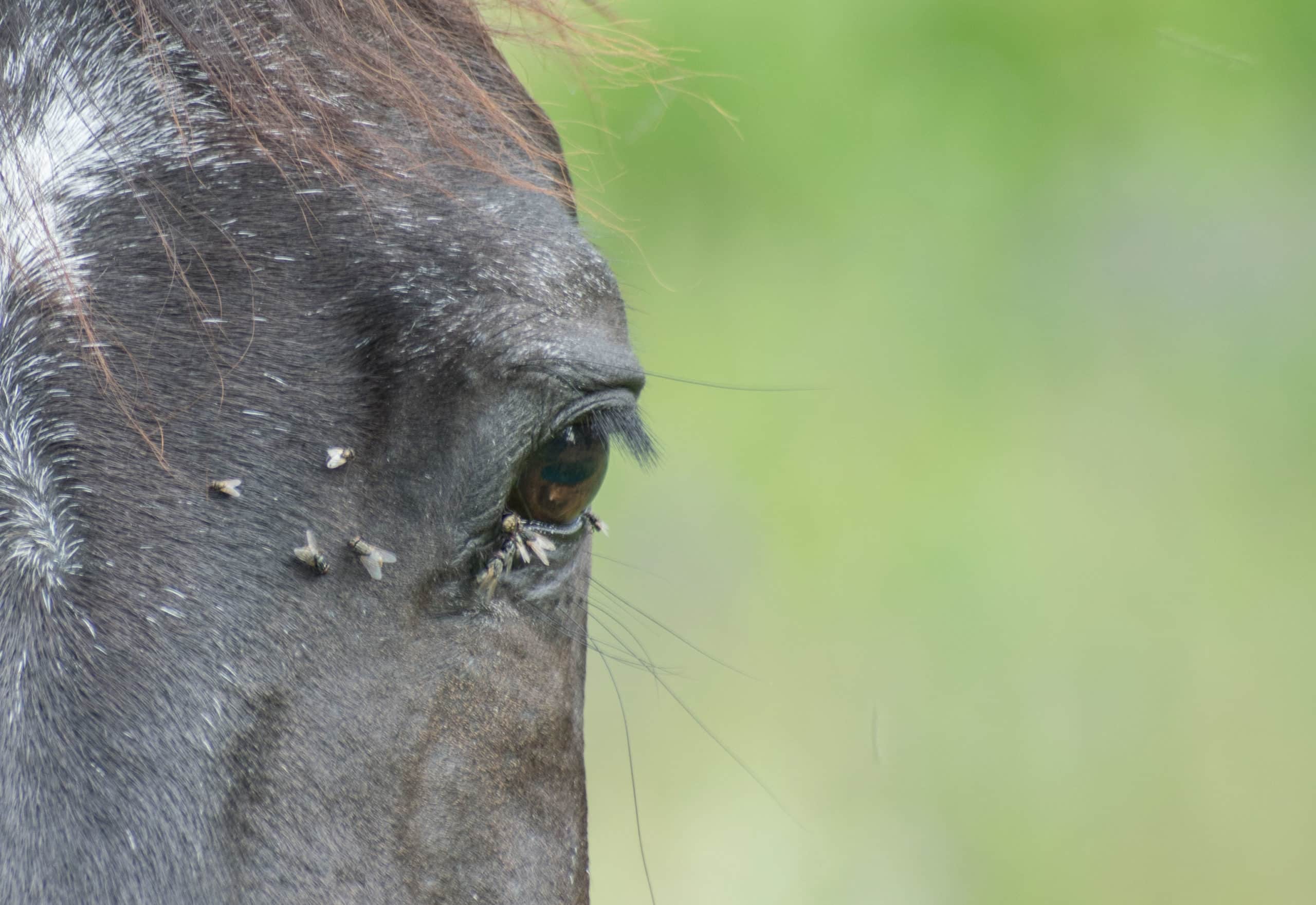How managing insects can help your horse stay sound

Insects like flies and mosquitoes are a particular nuisance during the summer months, not only for their constant and annoying presence, but for the myriad of issues they cause with our outdoor dwelling animals. They irritate skin, cause allergies and itching as well as carry several diseases that can be incredibly serious and difficult to treat. Moreover, they can shorten a horse’s patience and compromise his usually good-natured temperament and, unbelievably, can even contribute to soundness issues.
Horses do have a few built-in systems to help them with temporary relief of pests, however, keeping them in typical yard settings with others, subjects them to condensed gatherings of insects. Congregations of horses attract pests with their manure, sweat, skin cells and blood which are a source of nutrients to several species of insects. Since domestic horses are unable to migrate away from dense pest areas as they would in the wild, means extra efforts must be made to ensure their comfort.
While swishing of tails enables horses to effectively shoo away bugs, the stamping of hooves presents opportunity for further complications. Flies, especially larger species such as the March Fly and the Bot Fly prefer lower limbs to feed and lay their eggs which does not always go unnoticed by the horse. Horse owners that don’t live on the same property as their equine companion, may underestimate the impact of insects or miss the opportunity to observe the severity first hand, because insects are most active at dawn and dusk. Horses repeatedly striking the ground with force for a prolonged period of time can cause inflammation and lameness or accelerate and agitate pre-existing joint conditions such as arthritis.
Here are a few things you can do to help:
Rugging – Rugs protect large areas of skin and serves as a physical barrier from insect bites. Mesh rugs are excellent for tropical climates with high humidity and rain fall as they don’t remain wet on the skin the way cotton rugs can. This can create an ideal environment for the development of fungal skin conditions. In drier spots, a breathable cotton rug may be appropriate and for horses that are prone to Queensland Itch. Hoods with enclosed ears and tail bags are great options as these sensitive areas are favoured by insects due to blood vessels being close to the skin surface. Fly masks will also aid the cause and prevent fly-borne eye infections. Mesh ‘stockings’ can help alleviate stamping.
Wipe On Repellents – are handy and effective if applied regularly. They absorb much like cat and dog flea treatments and offer protection for about a week. Speak to your local saddlery for reputable brands and always check the label for approval claims. You can also contact the manufacturer for more information.
Spray Repellents, Fly Tape and Traps – every little bit of action taken helps! Make sure anything you’re using in direct contact is registered for use in horses. This will mean the ingredients have been tested for safety. Ensure fly traps and tapes are out of reach of the curious animals, such as pets and wildlife. Change them often to ensure efficacy.